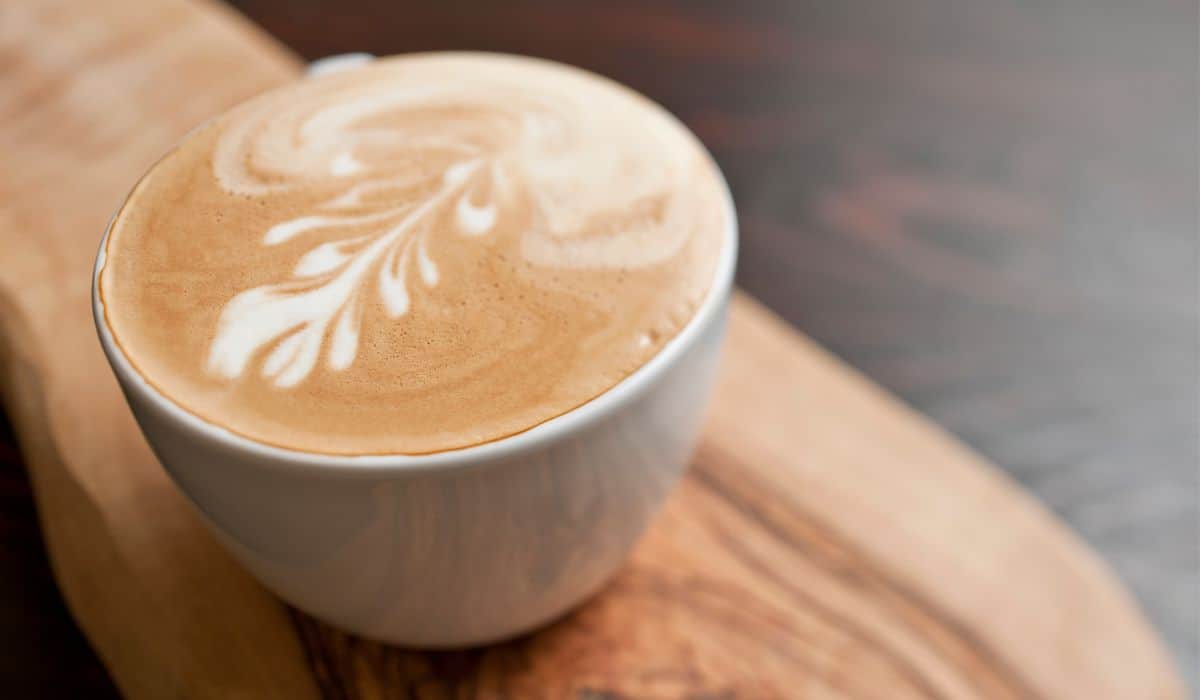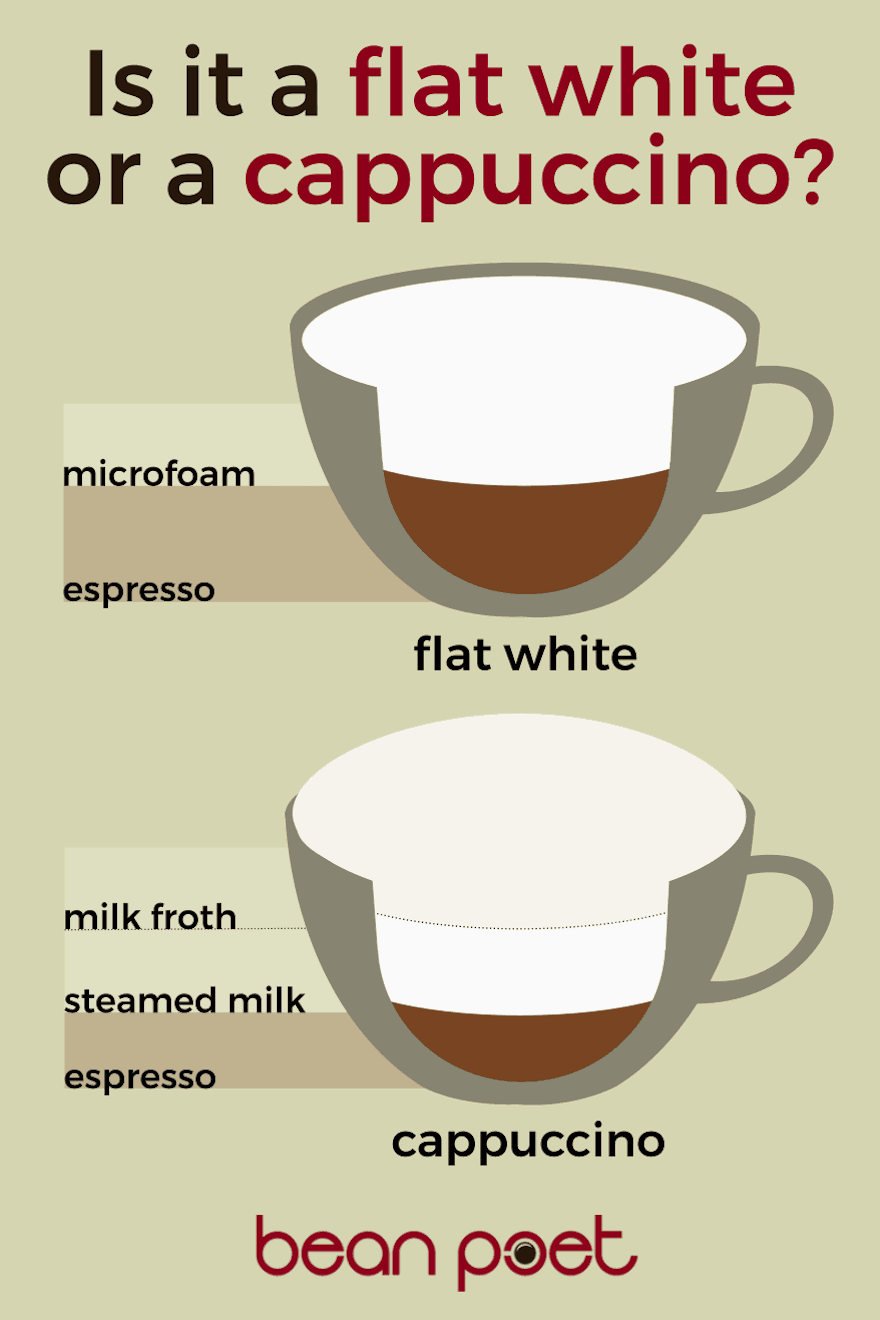Last Updated on December 4, 2023
The flat white and the cappuccino are both espresso drinks made with steamed milk, and they can be hard to tell apart.
The main difference between them is the form of the milk that is used: a flat white uses microfoam, while a cappuccino uses milk froth.
Microfoam vs. Milk Froth
Microfoam is milk with very tiny air bubbles that thicken it and give it a smooth, almost meringue-like silkiness on the surface of your flat white.
Milk froth is more airy and less dense, due to its larger bubbles. When piled high atop a cappuccino, milk froth seems like it could be carried away on a strong wind.
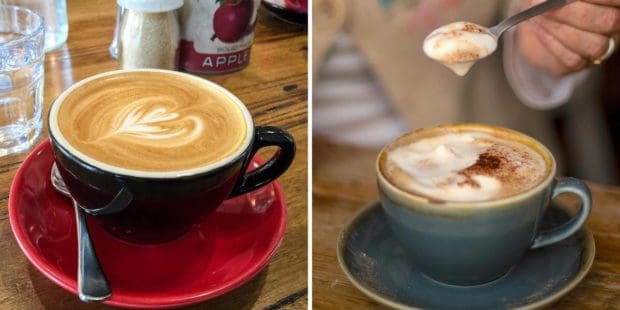
While the milk’s form is the most fundamental difference between these two coffee drinks, they also have different origins. And some say they should be served in different vessels and different proportions.
Let’s get into it.
Flat White?
The flat white, sometimes called a “wet cappuccino” was invented in either New Zealand or Australian coffee shops during the 1980s. Some trace the origins back to a problem with Australian cows’ milk that was preventing frothing, but New Zealanders claim the drink was simply invented as an alternative to lattes and cappuccinos.
Starbucks began selling flat whites in their U.K. shops in 2010 and introduced the specialty drink in U.S. stores in 2015.
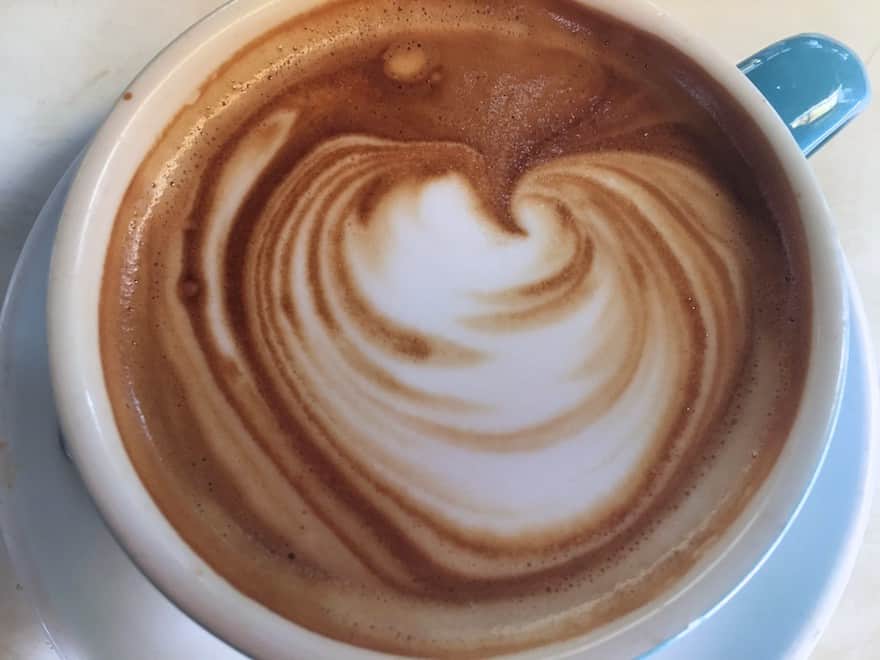
In the simplest terms, a flat white is an espresso drink with a layer of steamed milk on top. The beverage usually has less milk than a latte or cappuccino, and the milk is less frothy.
Some believe that a flat white must be served in a ceramic mug. Some insist it must be made with a ristretto or a short shot of espresso, to produce a more concentrated coffee flavour.
Cappuccino
In the 1700s, Viennese coffee shops began serving a drink called the kapuziner, named after the rich brown-colored robes of the Capuchin monks. The kapuziner was a coffee drink topped with whipped cream and spices. It became popular in Italy in the early 1900s when the espresso machine was invented, and Italian coffee culture was born. Sometime after the Second World War, Italians began to replace the whipped cream with frothy milk.
Cappuccinos did not become popular in North America until the 1980s.
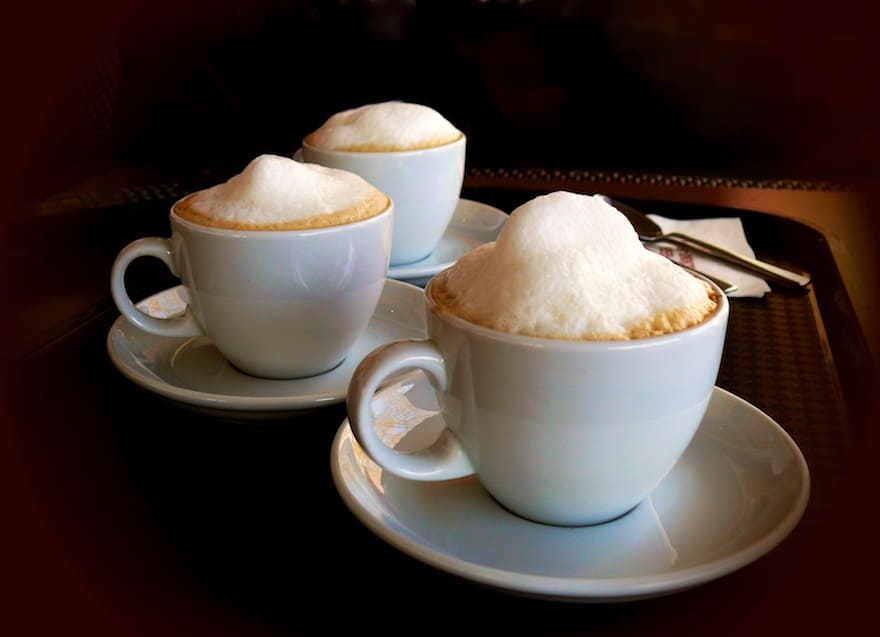
A traditional Italian cappuccino is one-third espresso, one-third milk, and one-third milk froth. Usually it’s a double shot of espresso. But this formula now varies greatly around the world. Many major coffee chains serve larger versions of the cappuccino with more milk and foam.
In Italy, cappuccinos are generally consumed only in the morning and not after a meal.
How to Make a Flat White
A perfect flat white begins with a ristretto espresso shot. This is a shot of espresso pulled using half the usual amount of water, which results in a richer coffee flavour. A New Zealand flat white calls for two shots, but Australians typically use only one.
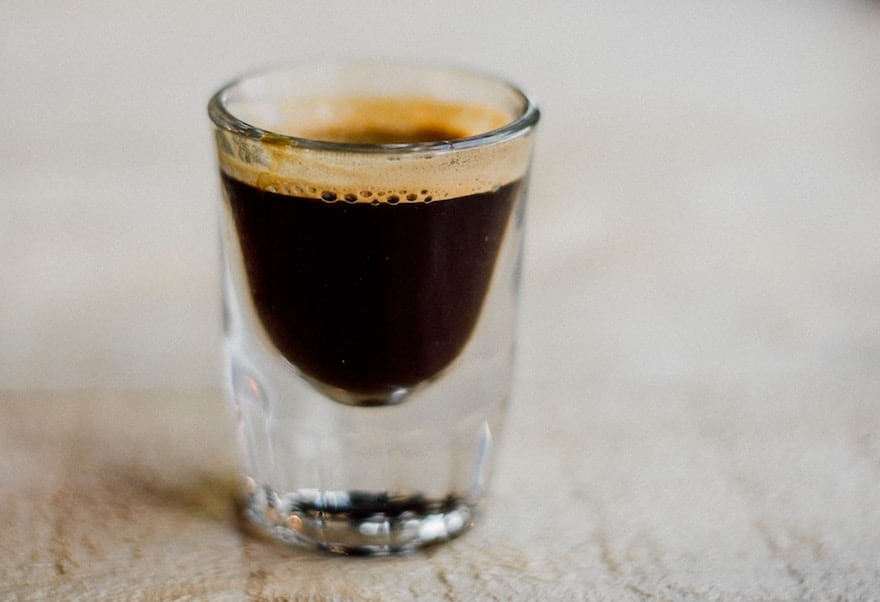
Then you froth whole milk until it reaches a creamy, velvety consistency, but before it begins to foam. (We discuss how to create microfoam in our post about latte art.) Pour the milk on the top of the shots so that it folds into the drink. Serve in a small, tulip-shaped ceramic mug.
You can make a flat white at home if you have a milk frother or an espresso machine with a frothing wand.
For best results, invest in a coffee bean grinder and make sure to use cold, fresh milk.
How to Make a Cappuccino
The perfect Italian cappuccino is a shot of espresso and twice as much milk frothed to 65 C or 149 F. The milk is frothed in a separate container, usually a stainless steel pitcher, using the frothing wand of an espresso machine. Serve the cappuccino in a large round ceramic mug. Add the espresso shot, pour some of the warmed milk into the mug and then top with the foamiest portion of the milk.
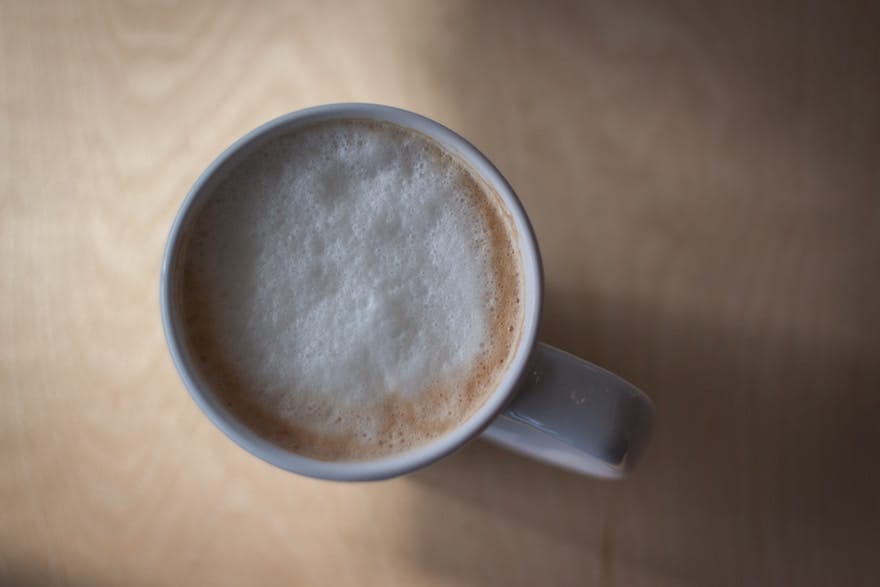
Calorie Content
A traditionally made cappuccino may have slightly fewer calories than a flat white. This is because half the milk volume in a cappuccino is foam. However, in many coffee shops, cappuccinos are served in larger portions than flat whites and these larger servings have more milk.
You might be tempted to cut the calories and fat in both drinks by using skim or 2% milk, but this will adversely affect the texture of the beverage.
Deciding Between the Two
Now that you know the difference between a flat white and a cappuccino, let your tastes determine which will be your order. It will likely be a flat white if you want more coffee flavor, or a cappuccino if you like a foamier, milkier drink.
Remember, many coffee shops have altered these traditional recipes so it;s a good idea to ask how each is prepared.

